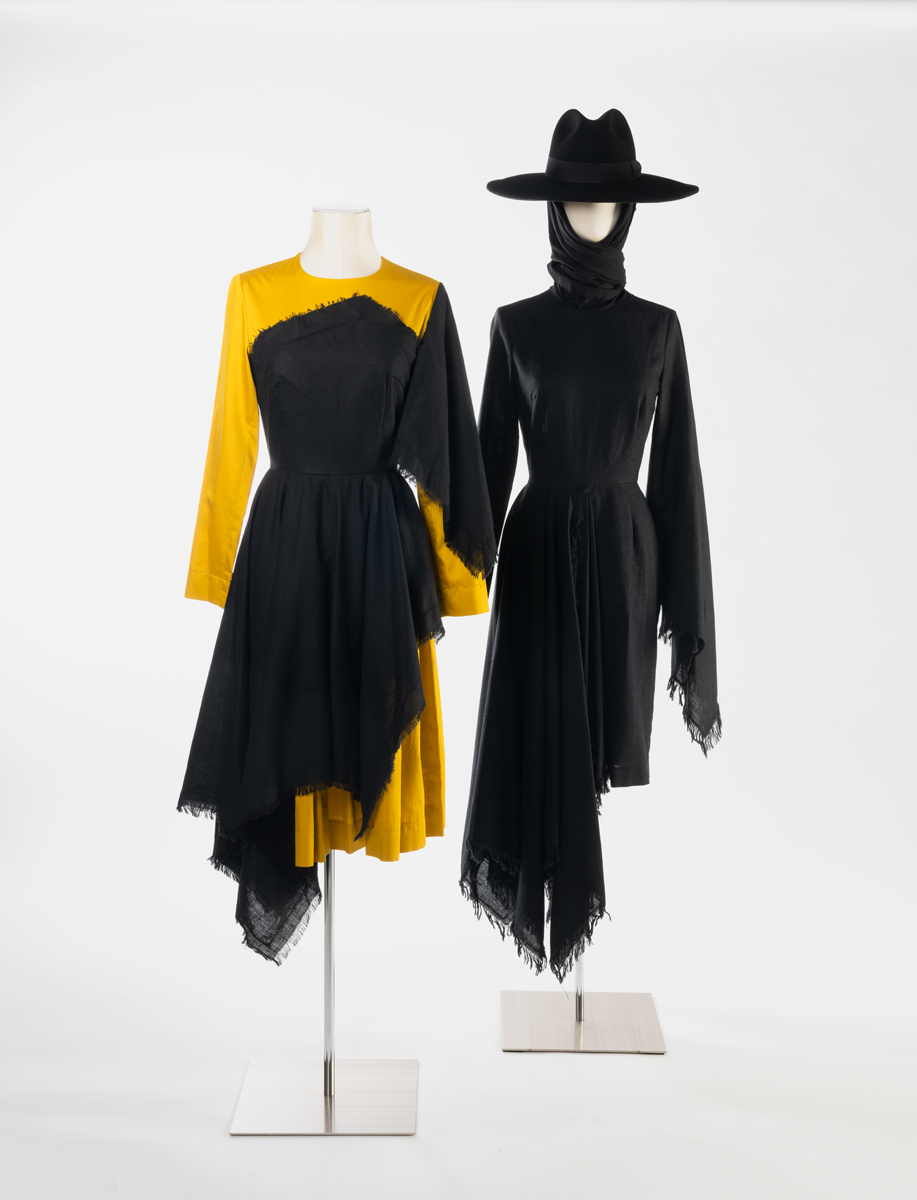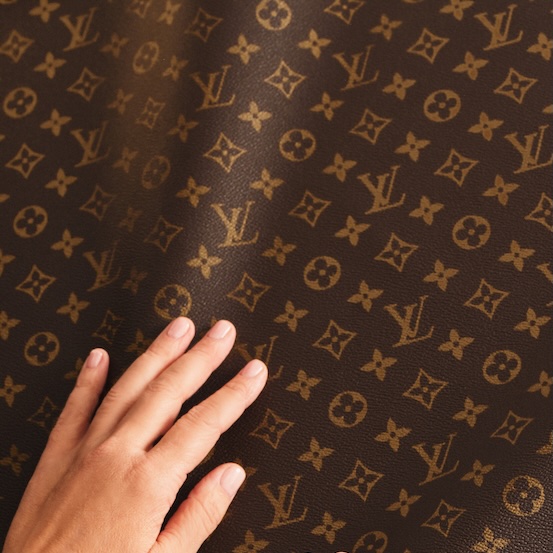Portugal Pop – A Moda em Português 1970-2020 explores the last 50 years of fashion history in Portugal. The exhibition, which features almost 200 items by 40 designers, can be seen at Casa do Design, in Matosinhos, until September. Bárbara Coutinho, director of MUDE - Museum of Design and Fashion, and curator of the show, explained to Vogue that the aim of this project is, above all, to encourage debate.
Portugal Pop – A Moda em Português 1970-2020 explores the last 50 years of fashion history in Portugal. The exhibition, which features almost 200 items by 40 designers, can be seen at Casa do Design, in Matosinhos, until September. Bárbara Coutinho, director of MUDE - Museum of Design and Fashion, and curator of the show, explained to Vogue that the aim of this project is, above all, to encourage debate.

This is pretty much how we got here. With the skirts by Maria Gambina, the dresses by Dino Alves, the shirts by Nuno Gama, the t-shirts by Luis Buchinho. But also with Doce's immaculate closet, inspired by the literature of Fernando Pessoa and Sophia de Mello Breyner and the art of Júlio Pomar, with the impressive looks of Sónia Tavares, from The Gift, with the irreverence of Conan Osiris, with the timeless presence of Amália Rodrigues, António Variações or Simone de Oliveira. What unites them is a very unique way of "being Portuguese" and bringing it to what they wear and what they do. Portugal Pop – A Moda em Português 1970-2020 presents a selection of 180 coordinated pieces by designers of different generations, backgrounds and languages, proposing multiple dialogues, with various references - from music to spectacle, from traditional crafts to sustainability - and encouraging debate about the identities of Portuguese fashion and its cultural, economic and social value. The exhibition is presented at Casa do Design, in Matosinhos, as part of the MUDE FORA DE PORTAS program, and is open until September 18, with free admission. Vogue spoke with Bárbara Coutinho about the intentions behind this great retrospective.
How did the idea of making this exhibition come about, and what goal did you have in mind when you set out to revisit 50 years of Portuguese Fashion history?My study of Fashion design in Portugal goes back many years. Back in 2014, with the exhibition Como se pronuncia design em português? (How do you pronounce design in Portuguese?) I had the same goal of discussing how the geographical circumstances of Portugal and our historical and cultural heritage, traditions, and collective consciousness, were reflected in creative terms in design. At that time, I limited myself to product design for methodological reasons, but the idea of developing a similar study on Fashion design was always present. In 2019, the opportunity to materialize this idea arose with the invitation that Casa do Design addressed to me personally, but which I decided to accept as director of the museum, in view of the collaboration between the City Councils of Matosinhos and Lisbon and between MUDE - Museum of Design and Fashion, and Casa do Design. With this curatorship I tried to give a perspective of Fashion through a temporal and prismatic window, unveiling various facets of society in transformation in each historical period. Thus, I created three reading axes in interrelation so that each visitor could observe the multiple interpretations of our popular culture and collective memory, made by the different designers represented with the purpose of showing the different intentions of each of them, according to their personal references. The last 50 years of our history were also contemplated in order to recognize the influence that some of the figures of our pop culture, particularly music and entertainment, had on Fashion through the way they built their brand image using different aspects of Portuguese culture.
Portugal Pop - A Moda em Português 1970-2020 represents two and a half years of research. How was this process?The actual work lasted about two and a half years because the confinement came up, which we all faced, but the pandemic context somehow reinforced some of my options, because for a long time I have been questioning myself about the unsustainability of the dominant development model on a planetary scale and the paradigms that prevail above the solutions that seem evident and urgent to all of us, but that is difficult to implement. On the eve of the opening, unexpectedly, Ukraine was invaded and we began to witness the attempted mass destruction of a culture, which may lead us to question the validity of a fashion exhibition that aims to look at how the geography, culture, and history of Portugal are reflected in the work of designers. In the introductory text of the exhibition, I refer to the urgency of knowing, preserving, and continuing to create our heritage and our collective memory, because it is important to avoid civilizational setbacks and political fundamentalisms. To know where we come from in order to know where we want to go, both individually and collectively, is elementary for people and citizens of the world. This exhibition was opened as a first systematized presentation of a hypothesis of reading of the last 50 years of Fashion in Portugal that is still intended to be complemented with the work of other designers and artists that may be present in future presentations.
When looking at the creations of these 40 designers, what is your analysis of the evolution of Portugal as a country that increasingly uses Fashion to illustrate its collective memory in a visual vehicle?The exhibition has 1969 as its starting point since it is the year in which Portugal participates in Eurovision with Simone de Oliveira singing the Portuguese Desfolhada with a long green dress created by Maria-Thereza Mimoso and lyrics that personify a country that wants to claim women's rights in the world. In contrast, one of the last mentions in the exhibition refers to Portugal's participation in Eurovision 2019, where Conan Osiris performs dressed by Luís de Carvalho, singing a fusion pop song, with allusions to fado and flamenco, hip-hop, gypsy, and Maghrebian singing in a more visual and acoustic libertarian message. The temporal cut between these two dates gives us some insight into the country that struggles until the overthrow of the dictatorship and embraces a profound transformation over the years to preserve the achievement of freedom and democracy. The creations of the 40 designers from different generations, backgrounds, and styles show, directly or indirectly, the various political and sociocultural contexts that the country has experienced. The plurality of proposals demonstrates the democratic freedom of our country and the right to express differences, as well as the strong investment made in the education and training sector. Looking at the various pieces in an integrated way, it is possible to identify mentalities and some contexts of change. The image of a poor, conservative, nostalgic, rural, and isolated country, with rigid customs and dark colors, was gaining other shades through a more contemporary, multicultural, unprejudiced, pop, and colorful language, which rethinks stereotypes and breaks with aesthetic precepts and social codes. Fashion culture in the 1980s and 1990s began to assert itself stimulated by various factors, such as the opening of fashion schools, the publication of fashion magazines and the recognition of photography and fashion production, the organization of various events and the consolidation of a professional fashion show calendar, while structural problems persist in this sector that makes it weak, mentioned almost unanimously among designers and professionals in the field. The small size of the domestic market, the vicissitudes resulting from successive crises and lack of strategic investment, the low purchasing power of the Portuguese, the incipient appreciation of the "made in Portugal" brand, the lack of training for new sewing and tailoring professionals, or the difficulties in internationalizing brands are some of the aspects that should be discussed, although currently, one can already notice the ongoing reflection on the design and creation times, production formats, communication strategies, and market diversification, mirroring the work on the nature and sustainability of Fashion in Portugal.
The exhibition presents a look at “portugality”, that quality intrinsic to everything Portuguese - and which contains, in itself, an enormous multiplicity. Can we still say that there is Portuguese Fashion?This is one of the purposes of the exhibition, to create and encourage this debate and consolidate this questioning, especially when foreign words have become so everyday and natural to us that it seems that nothing is presented in Portuguese anymore. The multiple ways in which the past and recent history of Portugal is presented, the material and immaterial heritage, the techniques, and knowledge, but also the concepts of place, territory, belonging, identity, “portugality” or memory have been reflected in the work of various Fashion designers, and reinterpreted through their different objectives. Our geographical condition, our collective history, our language, and our culture are reflected in the themes and imagery of many of the presented collections, in the reinterpretation of motifs and symbols, or even in the choice of natural materials and traditional manufacturing processes. All this shows the potential of fashion and the ability to recreate fashion from its own history and the reinterpretation of references from various eras, civilizations, and places, being an excellent example of local and global contemporary culture. However, trying to categorize a "Portuguese Fashion" without a debate that encourages its study may impoverish and reduce a dynamic and plural reality, which even our regional populations are having to confront these days, as we can see in the controversial situations involving the Camisola Poveira and the Capote Alentejo. It is urgent that we recognize the existence of creative and human potential and invest in the role that fashion, crafts, and culture can have as strategic factors for the sustained development of local economies, territories, and regions of our country, as they can be very important means to respect human dignity and intergenerational social cohesion, breaking down false dichotomies of "old/new", "popular/erudite", "rural/urban", "national/foreign", and promoting regional and traditional knowledge as a source of inspiration, education, and development, for its example of ecology, rationality, and economy of local resources. In other words, we have to continue to debate and transform the Fashion system, with ethical, social, and environmental intentionality, in light of the current context of refocusing on the economic and productive models in force both at home and abroad. If we do this as a people, we will be making an important contribution to change, whether at a national or international level.
Translated from the original on The Sunny Vibes Issue, from Vogue Portugal, published July 2022.Full stories and credits on the print issue.
Most popular

O que lhe reservam os astros para a semana de 30 de dezembro a 5 de janeiro
30 Dec 2025
.jpg)
.jpg)
Relacionados


Louis Vuitton: aniversário do icónico Monogram celebra-se com muitas novidades
01 Jan 2026



.jpg)